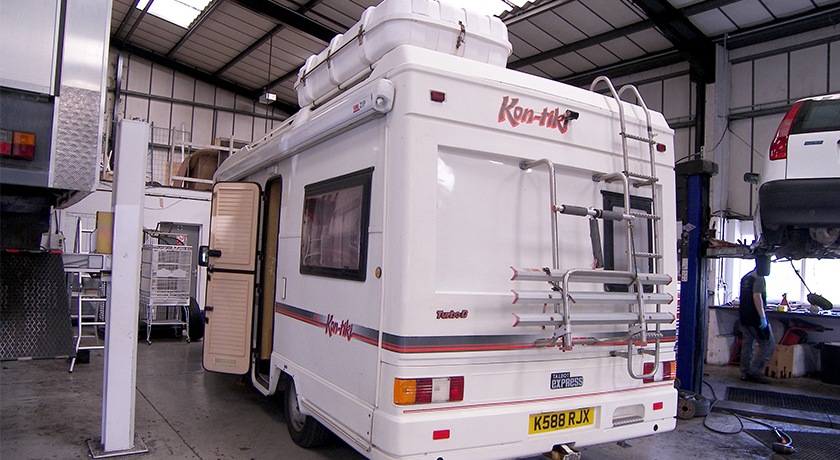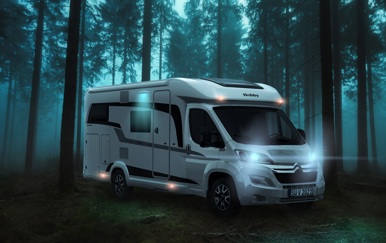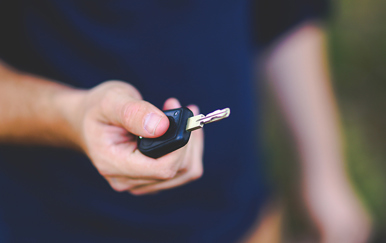Once basic and lacking any real luxuries, the modern motorhome is a completely different vehicle from what it used to be. Back then, mention a service and it would consist of a trip to the local garage for the mechanics to be serviced and that was that! And when it came to other items like the coach-built section, these were usually maintained with a hosepipe every now and again!
Fast forward to the present day and with more complex systems, bodywork and electrics to think about, as well as the invested cost, your motorhome needs to remain in good shape so it can keep up with all your adventures. Here are just some suggestions on how to achieve this.
Servicing - no more DIY motorhome books

Of course, the industry now has set guidelines on servicing that manufacturers insist you keep up to date, especially if the motorhome is new and under warranty.
Thankfully, the days of buying DIY motorhome books and tackling jobs that can only be classed as ‘better left to the trained professional’ are over. However, if you want to carry out a few spot checks here and there to make sure your vehicle is ready for the next trip then run-of-the-mill maintenance is perfectly fine.
Cleaning the exterior

When cleaning the exterior, we suggest beginning with a rinse off starting from the roof using a set of good quality step ladders with somebody holding onto them! You’ll need a long reach brush, but make sure to look for the softest brush head to avoid scratching, plus a good bucket and quality car shampoo such as ‘AutoGlym luxury car shampoo’ - it's expensive but of excellent quality. Remember though to make sure windows are rinsed first before applying the shampoo otherwise you will add scratches.
Once you’ve given the vehicle a good wash, dry off in sections with a drying duster.
For more on how to clean your motorhome effectively and correctly, check out our how-to-clean your motorhome guide!
Safety checks
You’ll want to carry out a few safety checks. We’d recommend checking all the exterior trim is secure and seals look in good order; you can also give any external hatch locks a squirt of WD40, especially if they haven’t been used for some time.
We’d always suggest checking the tyres for the correct pressures, which you can find in your handbook, and for any damage. Whilst you’re there, and after washing, you might as well give them a go-over with tyre gel to help protect the tyre wall and make them look like brand-spanking new!
To check for signs of any leaks and to make sure they’re still secure, you can run water through all external plumbing. And it would be useful to use a cleaner in the water pipes to remove any debris build-up, any caravan/motorhome accessory shop will have a list of recommended brands for this.
Before setting off, always check the onboard battery and give a charge, and if you’re not using it, keep it trickle charged to extend its life
Inside the motorhome
Move inside and it’s amazing how dust settles, so to maintain the interior it’s always worth giving it the once over with a duster and a vacuum. In addition to this, give the fridge a once over and make sure it works. Same with the heating as, on either wet or blown heating systems, pump failure isn’t uncommon. Keep sink and hob units wiped down, especially enamelled finish ones as they scratch and show marks easily.
A few other things to add to the checklist are: checking all lockers for weak hinges or ones that need adjusting as you don’t want them swinging open whilst out on the road, window catches and the blinds to make they don’t need re-tensioning.
Internal lights also need to be tested for any malfunctions such as failed bulbs. And a really important one to check is the gas burner - does it burn a blue flame or yellow? If it’s the latter, it needs to be checked. Whilst on the subject, review the pressure on the gas too to ensure there are no leaks.
The water system will also need to be monitored for any major air locks and you’ll want to ensure that the shower works.
Damp can be a prime issue, especially in older models, so check floors especially near the kitchen area; if it creaks or feels soft underfoot it means the floor is delaminating so get it checked out. We’d also suggest looking for any internal damp spots or cracks in the washroom floor where water can seep through and rot the floor area.

You won’t to take shelter from a storm and realise your roof leaks so the roof vents will also need to be checked to make sure they operate smoothly and don’t let in any leaks.
And lastly, keep an eye for any loose connections on the electrics.
If you carry out these checks regularly, you’ll be able to sit back and enjoy some trouble-free touring.
Key takeaways
- Servicing - keep up to date, especially if the motorhome is new and under warranty.
- Cleaning the exterior - you’ll need a long-reach brush, good bucket, quality car shampoo, plus a set of good quality step ladders with somebody holding onto them!
- Safety checks - we’d recommend checking all the exterior trim, tyre pressure, water pipes and the onboard battery.
- Inside your motorhome - give everything a good clean, and check all lightbulbs, gas pressures and water systems. I'd also look around and check for any sign of leaks or damp.
The last stop!
One of the best ways you can maintain your motorhome is by insuring it and protecting it against the risk of fire or theft.
If you have your very own motorhome to insure, make sure to get a motorhome insurance quote direct with Lexham!





